Tracksuits have evolved from being mere athletic wear to becoming a staple in modern fashion. Their versatility, comfort, and style have made them a popular choice among consumers worldwide. This article delves into the global demand for tracksuits, key players in the market, and the consumer demographics and preferences driving this trend.
Table of Contents:
– Market Overview
– Trending Materials and Fabrics
– Design Innovations in Tracksuits
– Functionality and Features
– Cultural Influence and Heritage
Market Overview
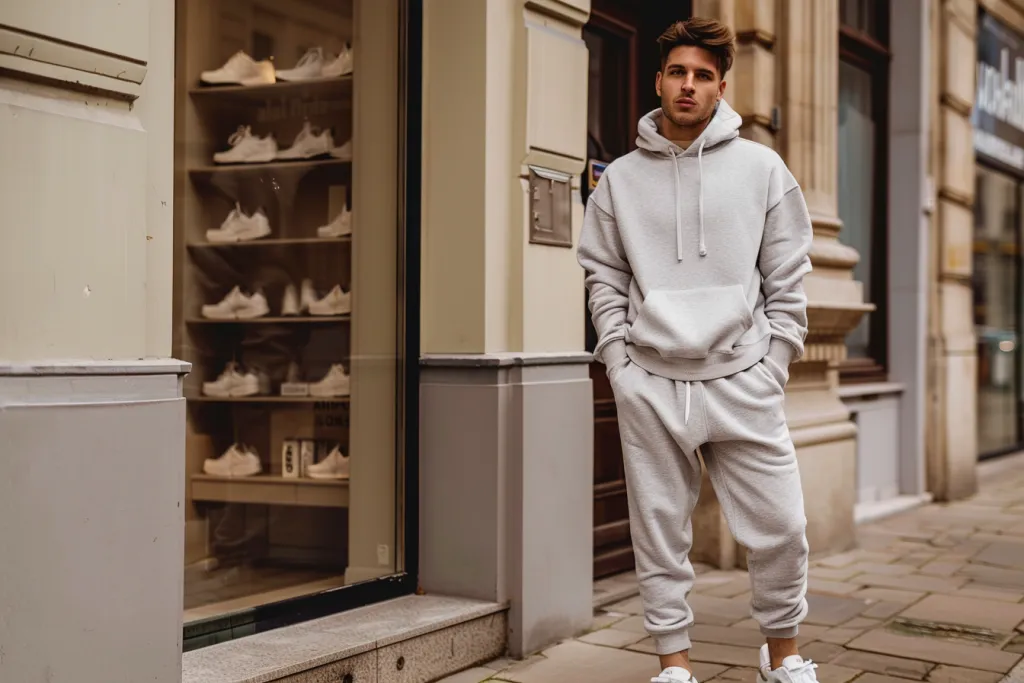
Global Demand for Tracksuits
The global demand for tracksuits has seen a significant rise in recent years. According to Statista, the revenue in the suits market in the United States amounted to US$2.12 billion in 2024. This trend is mirrored globally, with China generating the highest revenue in the suits market, reaching US$3,064 million in 2024. The increasing preference for casual and comfortable clothing has driven the popularity of tracksuits, making them a key segment in the apparel industry.
The tracksuit market is expected to continue its growth trajectory, with a projected annual growth rate of -0.84% (CAGR 2024-2028) in the United States. This growth is fueled by the rising trend of athleisure, where consumers seek clothing that seamlessly transitions from workout wear to casual attire. The versatility and comfort offered by tracksuits make them an ideal choice for this lifestyle.
Key Players in the Tracksuit Market
Several key players dominate the tracksuit market, each contributing to the industry’s growth through innovation and strategic marketing. Brands like Nike, Adidas, and Puma have established themselves as leaders in the market, offering a wide range of tracksuits that cater to different consumer needs. These companies invest heavily in research and development to create high-performance tracksuits that combine style, comfort, and functionality.
Nike, for instance, has leveraged its strong brand presence and innovative designs to capture a significant market share. Adidas, known for its iconic three-stripe design, continues to attract consumers with its blend of classic and contemporary styles. Puma, on the other hand, focuses on creating tracksuits that appeal to both athletes and fashion-conscious individuals.
Consumer Demographics and Preferences
The consumer demographics for tracksuits are diverse, encompassing various age groups, genders, and lifestyles. According to Statista, the per person revenue in the suits market in the United States is estimated to be US$6.21 in 2024. This indicates a broad consumer base that values the comfort and versatility of tracksuits.
Younger consumers, particularly millennials and Gen Z, are driving the demand for tracksuits. These age groups prioritize comfort and style, making tracksuits a popular choice for both casual wear and athletic activities. Additionally, the growing trend of remote work has increased the demand for comfortable clothing, further boosting the tracksuit market.
In terms of gender, both men and women show a strong preference for tracksuits. However, there is a noticeable trend of women seeking tracksuits that offer a blend of fashion and functionality. Brands are responding to this demand by creating tracksuits with unique designs, colors, and patterns that cater specifically to female consumers.
Trending Materials and Fabrics
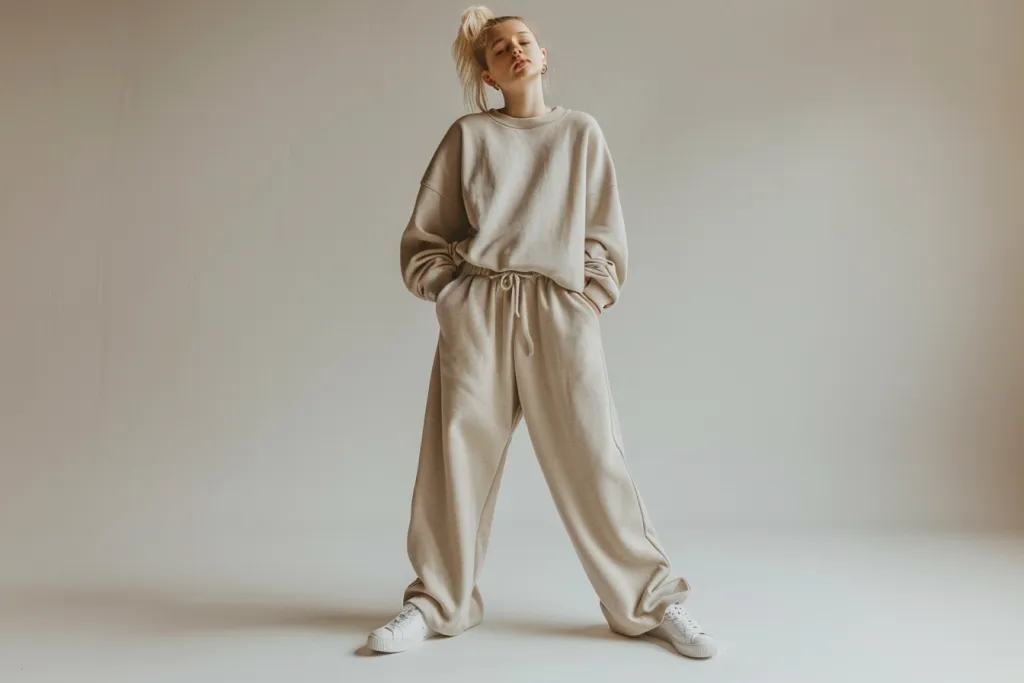
Sustainable and Eco-friendly Fabrics
The apparel industry is increasingly prioritizing sustainability, and tracksuits are no exception. The demand for eco-friendly fabrics has surged, driven by consumer awareness and environmental concerns. According to recent reports, materials such as organic cotton, recycled polyester, and Tencel are becoming popular choices for tracksuits. These fabrics not only reduce the environmental footprint but also offer comfort and durability. Brands are also exploring innovative materials like hemp and nettle blends, which are known for their minimal environmental impact and high performance. The use of sustainable fabrics aligns with the broader trend of ethical fashion, appealing to eco-conscious consumers who seek to make responsible purchasing decisions.
High-performance Synthetic Materials
High-performance synthetic materials continue to dominate the tracksuit market, offering benefits such as moisture-wicking, breathability, and durability. Technical fabrics like nylon, spandex, and polyester blends are favored for their ability to enhance athletic performance. These materials are engineered to provide optimal support and flexibility, making them ideal for various physical activities. The integration of advanced technologies, such as antimicrobial treatments and UV protection, further enhances the functionality of synthetic tracksuits. As reported by industry experts, the demand for high-performance materials is expected to grow, driven by the increasing popularity of athleisure and activewear.
Comfort and Breathability
Comfort and breathability are paramount in tracksuit design, and brands are continually innovating to meet these demands. Natural fibers like cotton and linen are celebrated for their softness and breathability, making them popular choices for casual and loungewear tracksuits. Linen, in particular, has seen a significant increase in popularity, with a 37% year-over-year growth in arrivals, as noted in recent market analyses. The use of lightweight and breathable fabrics ensures that tracksuits remain comfortable during various activities, from lounging at home to engaging in outdoor sports. The focus on comfort is also reflected in the design of relaxed silhouettes and ergonomic cuts that allow for unrestricted movement.
Design Innovations in Tracksuits
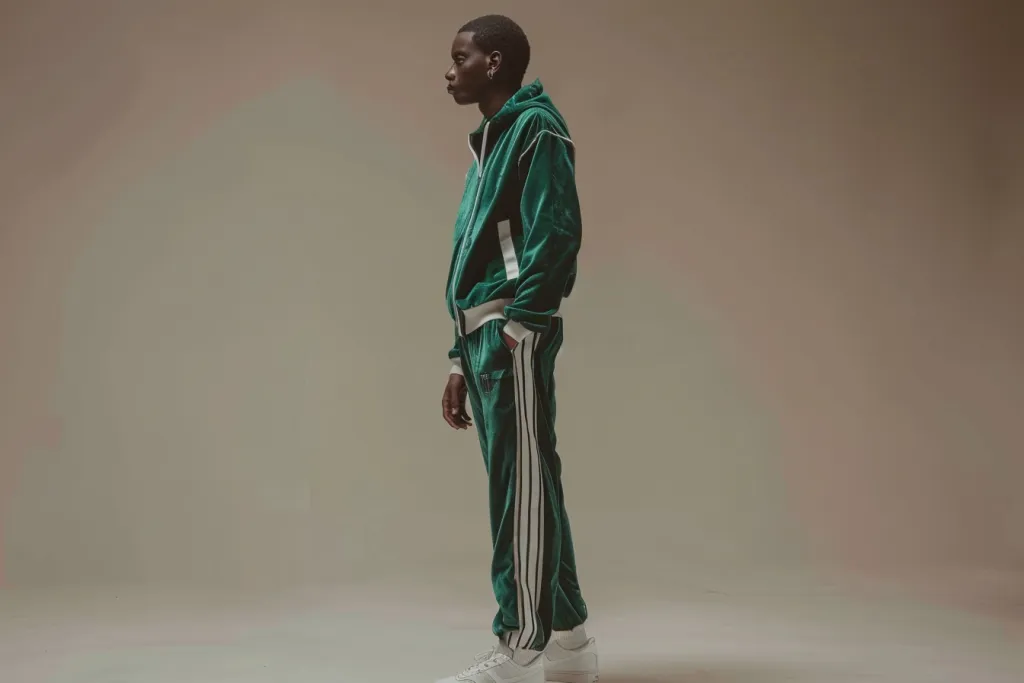
Modern Cuts and Silhouettes
Tracksuit design has evolved significantly, with modern cuts and silhouettes taking center stage. The trend towards oversized and relaxed fits has gained traction, offering a contemporary and comfortable aesthetic. Designers are experimenting with various silhouettes, from tapered joggers to wide-leg trousers, catering to diverse style preferences. The incorporation of tailored elements, such as pin-tuck seams and gathered waists, adds a touch of sophistication to tracksuits, bridging the gap between casual and formal wear. This evolution in design reflects the broader trend of versatile and adaptable fashion, where tracksuits can seamlessly transition from gym wear to streetwear.
Popular Color Palettes
Color palettes play a crucial role in tracksuit design, with trends shifting towards both bold and neutral hues. According to recent runway reports, darker greys and faded effects influenced by preppy and grunge aesthetics are popular in womenswear. For menswear, classic colors like navy, black, and grey remain staples, while vibrant shades and color-blocking techniques are also making a statement. The use of neutral hues, which currently make up the highest majority of sell-outs, is particularly notable in linen tracksuits. This trend towards versatile and timeless colors ensures that tracksuits remain a wardrobe essential, suitable for various occasions and settings.
Unique Patterns and Textures
Patterns and textures are key elements in tracksuit design, adding visual interest and depth to the garments. The resurgence of tie-dye, stripes, and graphic prints reflects the influence of streetwear and pop culture on tracksuit trends. Textures, such as waffle knits and ribbed finishes, are also gaining popularity, offering a tactile and stylish appeal. The integration of unique patterns and textures allows brands to differentiate their products and cater to consumers seeking distinctive and fashionable tracksuits. As reported by industry analysts, the mention of textures has increased by 229% year-over-year, indicating a growing interest in this design element.
Functionality and Features
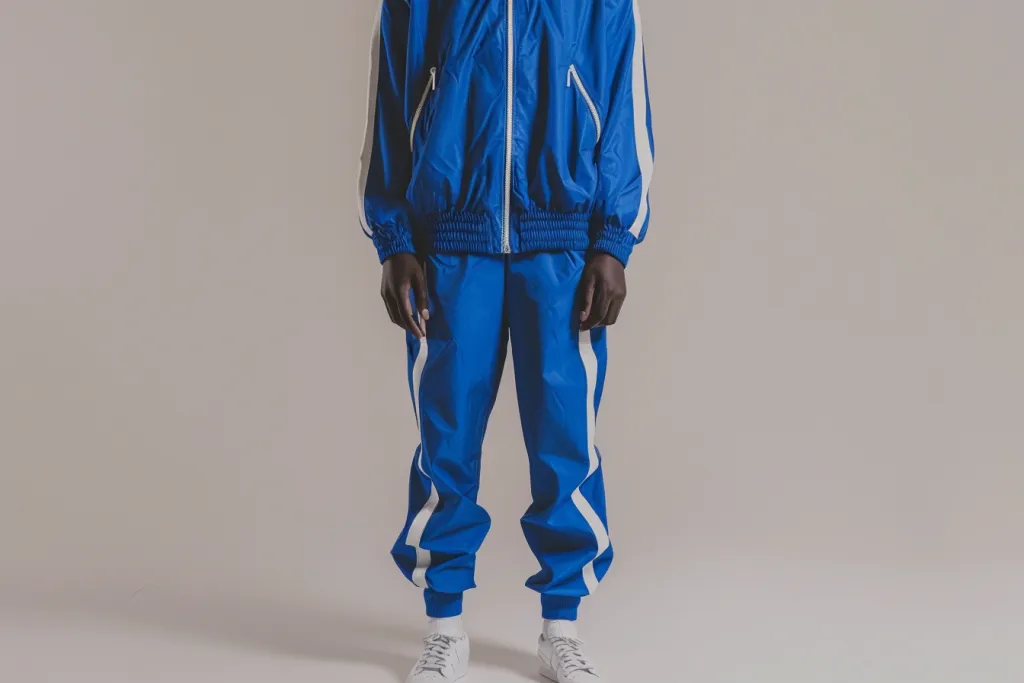
Versatility for Different Activities
Tracksuits are renowned for their versatility, making them suitable for a wide range of activities. Whether it’s for athletic performance, casual wear, or lounging, tracksuits offer the perfect blend of comfort and functionality. The adaptability of tracksuits is further enhanced by design features such as adjustable drawstrings, zippered pockets, and detachable hoods. These elements allow wearers to customize their tracksuits to suit their needs, making them a practical choice for various scenarios. The versatility of tracksuits is a key factor driving their popularity, as consumers seek multifunctional garments that can seamlessly fit into their active lifestyles.
Technological Enhancements
Technological advancements have revolutionized tracksuit design, incorporating features that enhance performance and comfort. Moisture-wicking fabrics, antimicrobial treatments, and UV protection are just a few examples of the innovations that have become standard in high-performance tracksuits. These technologies ensure that tracksuits remain comfortable and hygienic, even during intense physical activities. The integration of smart textiles, such as fabrics embedded with sensors to monitor body metrics, represents the next frontier in tracksuit innovation. As technology continues to advance, tracksuits are set to become even more functional and tailored to the needs of modern consumers.
Seasonal Adaptations
Seasonal adaptations are crucial in tracksuit design, ensuring that garments remain suitable for different weather conditions. Lightweight and breathable fabrics are ideal for warmer months, while insulated and water-resistant materials are preferred for colder seasons. The use of trans-seasonal fabrics, such as double-faced knits and fleece-lined materials, allows tracksuits to provide comfort and warmth without compromising on style. Seasonal adaptations also extend to color palettes and patterns, with brighter hues and floral prints dominating spring collections, and darker, muted tones featuring in fall and winter lines. This attention to seasonal variations ensures that tracksuits remain a year-round wardrobe staple.
Cultural Influence and Heritage
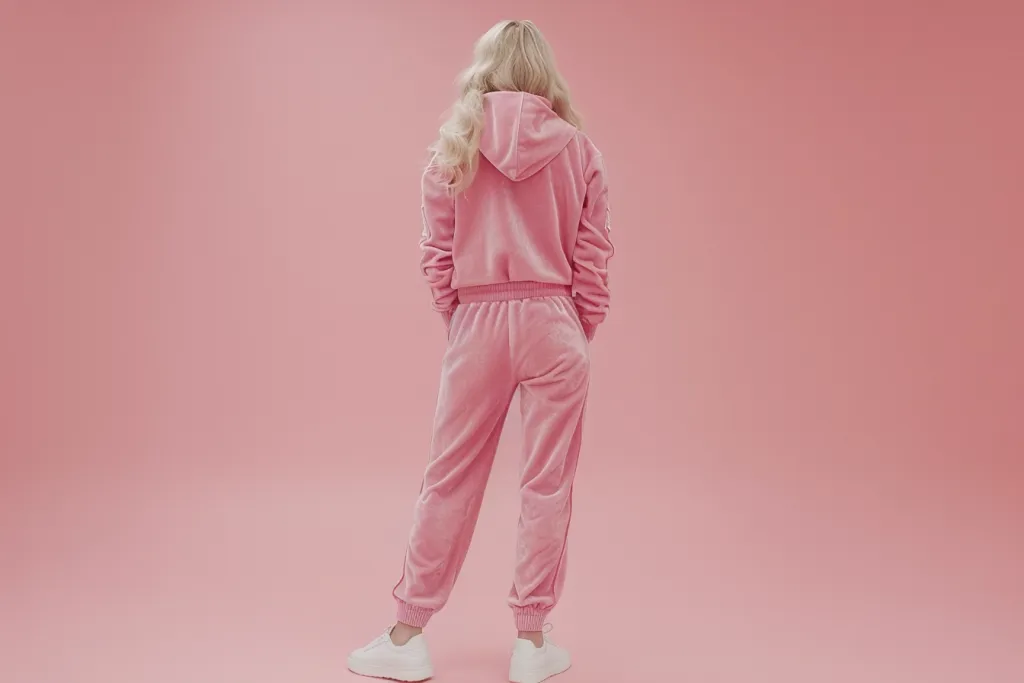
Tracksuits in Pop Culture
Tracksuits have a rich history in pop culture, often associated with iconic moments and influential figures. From the hip-hop scene of the 1980s to the athleisure trend of the 2000s, tracksuits have been a symbol of style and self-expression. The resurgence of luxury athleisure, as seen in recent collections by brands like Y-3 and Louis Vuitton, highlights the enduring appeal of tracksuits in contemporary fashion. Tracksuits have also made appearances in popular media, from movies to music videos, cementing their status as a cultural staple. This deep-rooted connection to pop culture continues to influence tracksuit design, with brands drawing inspiration from past and present trends.
Historical Evolution of Tracksuits
The evolution of tracksuits is a testament to their adaptability and enduring popularity. Originally designed for athletic purposes, tracksuits have undergone significant transformations over the decades. The 1970s and 1980s saw the rise of tracksuits as a fashion statement, with bold colors and logos becoming synonymous with sportswear. The 1990s and 2000s brought about the athleisure trend, where tracksuits became a staple in everyday wear. Today, tracksuits continue to evolve, incorporating modern design elements and advanced technologies. This historical evolution reflects the dynamic nature of fashion, where tracksuits have managed to remain relevant and stylish across generations.
Regional Style Variations
Tracksuits exhibit regional style variations, influenced by cultural preferences and fashion trends. In Europe, tracksuits often feature sleek and minimalist designs, with a focus on high-quality fabrics and tailored fits. In contrast, American tracksuits are characterized by bold colors, graphic prints, and a more relaxed silhouette. Asian markets, particularly Japan and South Korea, have embraced tracksuits with unique patterns and innovative designs, reflecting the influence of streetwear and pop culture. These regional variations highlight the versatility of tracksuits, allowing brands to cater to diverse consumer preferences and market demands.
Conclusion
The tracksuit has evolved from a simple athletic garment to a versatile and stylish wardrobe essential. With advancements in sustainable materials, innovative designs, and technological enhancements, tracksuits continue to adapt to the changing needs and preferences of consumers. As tracksuits remain a cultural and fashion staple, their future looks promising, with endless possibilities for innovation and creativity. Brands that embrace these trends and prioritize quality and functionality will undoubtedly thrive in the dynamic world of tracksuit fashion.




